Last updated: November 8, 2024
Article
The Southern Pine Beetle: The Tree Killer

Map/United States Department of Agriculture and the United States Forest Service
Given that it’s smaller than a grain of rice, it might be hard to believe that the minuscule southern pine beetle (Dendroctonus frontalis) could cause massive damage to forests! These beetles have been a well-known foe of the southern United States for centuries, but they are a new enemy to the Northeast.
The southern pine beetle was first recorded in the southeastern United States in the late 1700s. Though they are originally native to the southeast, warming winter temperatures have allowed the beetle's range to expand up the east coast in recent decades.
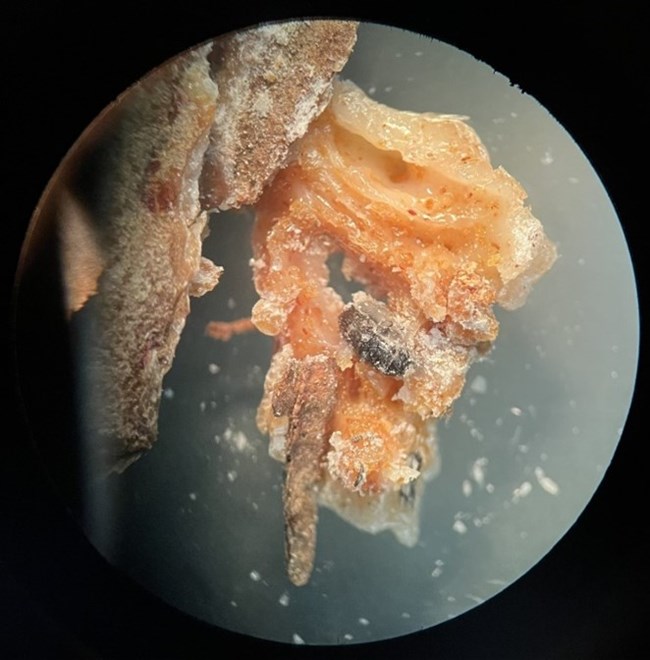
Photo/Felicia Hubacz, Massachusetts Bureau of Forest Fire Control and Forestry

Graphic/Ronald F. Billings, Texas A&M Forest Service
Unfortunately, it can be challenging to spot the beetles themselves, considering that they are smaller than half of a grain of rice in their adult form. The beetle looks different during each stage of its life:
-
The egg is white.
-
The larva is crescent-shaped with a dark red/brown head.
-
The pupa is white.
-
As an adult, they are light brown/black.

Photo/Jiri Hulcr, University of Florida
Luckily, the physical appearance of the beetle isn't the only way to identify their presence, as you can tell by the damage they cause. The presence of pitch tubes would be your first physical indicator. Pitch tubes look like popcorn sticking out of the bark; these are the tree's natural defense against predators. If you peel back the bark of an infested tree, you might also find S-shaped designs drilled into the wood called "galleries."
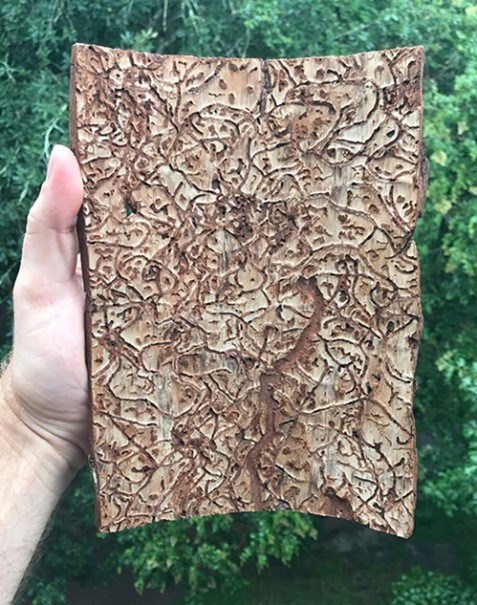
Photo/Jiri Hulcr, University of Florida

Photo/ Southern Forest Insect Work Conference Archives

Photo/Mississippi Entomological Museum
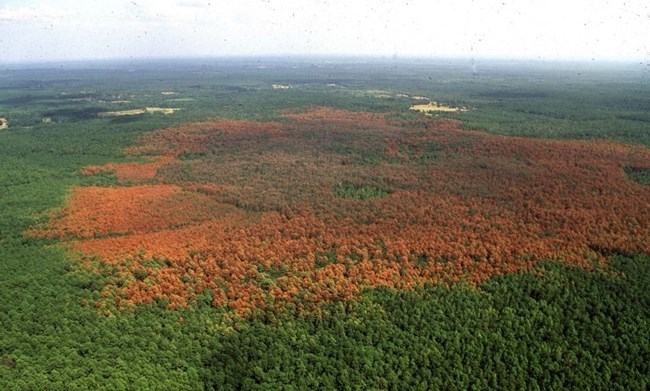
Photo/Ronald F. Billings, Texas A&M Forest Service, Bugwood.org
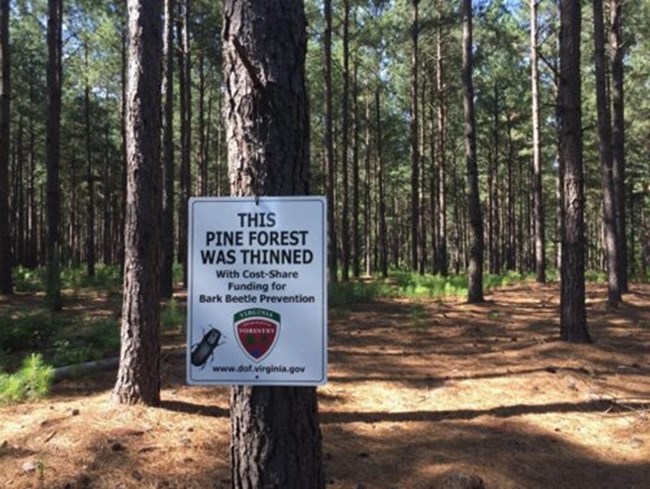
Photo/ Katlin Dewitt, Virginia Department of Forestry
There are a few effective ways to treat a southern pine beetle outbreak. Prescribed burns, where planned fires are set and carefully managed, can combat an outbreak as well as strengthen the ecosystem in pitch pine forests.
Felling trees is another option, with a few different techniques available. The "cut and remove" technique consists of removing infected trees from the site to be processed, while "cut and leave" can be used when trees cannot be taken to a different location, so they are left where they are cut. Cutting down trees and thinning areas of forest creates more distance between trees, which makes it more difficult for the beetles to communicate via pheromones, find each other, and attack in large numbers.
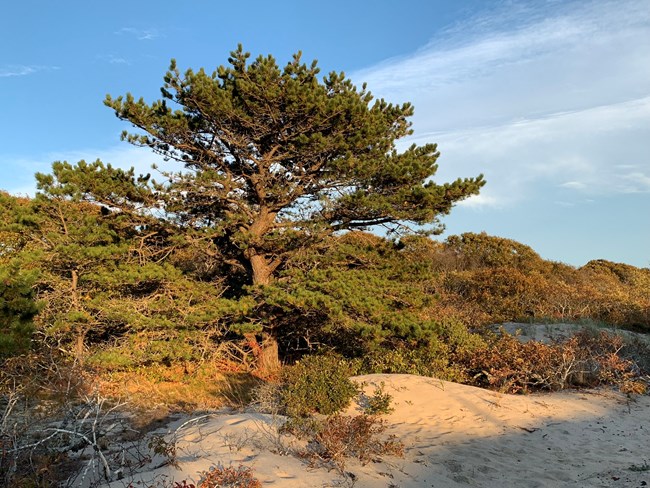
Photo/John N. Cullity, Sandwich Conservation Trust
You can help keep our forests safe by following these guidelines:
- Be on the lookout! If you see a tree displaying symptoms of southern pine beetle infestation, like pitch tubes, contact the Massachusetts Department of Conservation Forestry Health program to report the tree. Massachusetts Southern Pine Beetle Reporting Form
- Make sure you are not bringing in firewood to campsites and bonfires from elsewhere. Use local firewood instead!
